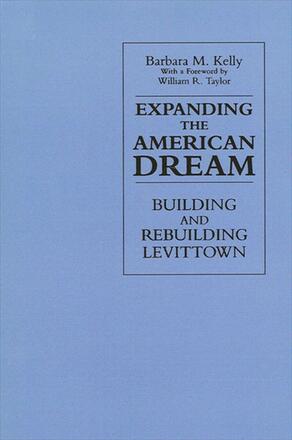
Expanding the American Dream
Building and Rebuilding Levittown
Alternative formats available from:
Description
Much has been written about the housing policies of the Depression and the Postwar period. Much less has been written of the houses built as a result of these policies, or the lives of the families who lived in them. Using the houses of Levittown, Long Island, as cultural artifacts, this book examines the relationship between the government-sponsored, mass-produced housing built after World War II, the families who lived in it, and the society that fostered it.
Beginning with the basic four-room, slab-based Cape Cods and Ranches, Levittown homeowners invested time and effort, barter and money in the expansion and redesign of their houses. The author shows how this gradual process has altered the socioeconomic nature of the community as well, bringing Levittown fully into the mainstream of middle-class America.
This book works on several levels. For planners, it offers a reassessment of the housing policies of the 1940s and '50s, suggesting that important lessons remain to be learned from the Levittown experience. For historians, it offers new insights into the nature of the suburbanization process that followed World War II. And for those who wish to understand the subtle workings of their own domestic space within their lives, it offers food for speculation.
Barbara M. Kelly is Assistant Professor and Curator of the Long Island Studies Institute at Hofstra University.
Reviews
"Urban/suburban historians have been insufficiently attentive to the physical environment as a source of historical evidence. Architectural historians have been interested primarily in the initial design of buildings, in ferreting out the designer's sources and intentions. Kelly joins a growing number of specialists in vernacular architectural history and material culture studies who are interested in understanding the meanings of buildings by looking at their use(s) and change(s) as well as their initial designs. "— Mary Corbin Sies, University of Maryland
"Ms. Kelly has written a book that will be used both in courses concerned with suburbanization and those engaged with the continuous process of environmental design and redesign. One of the greatest delights of the book is the way she connects familiar artifacts and processes — drying clothes, redoing a kitchen, adding a room, growing older — to the design of communities and the politics of gender and class. " — Seymour J. Mandelbaum, University of Pennsylvania